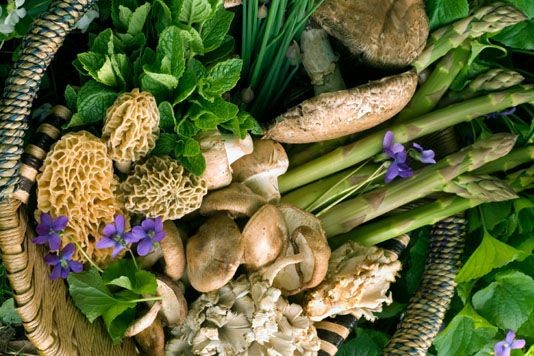How to forage for food without getting ill

The fashion for foraging has attracted controversy. Should we all be doing it, and if so, how can we do it safely?
Few people are without experience of time spent in some bucolic, sun-kissed location, searching for free food.
I myself have happy childhood memories of blackberrying, collecting winkles on Yorkshire beaches, roasting hauls of sweet chestnuts over fire and returning to a particular field where giant puff balls grew prolifically. It wasn’t all about food, either; everyone at my school knew exactly how to use rosehips nefariously.
Foraging is often a way of life for country dwellers, but urbanites are increasingly awakening to its joys too.
This isn’t simply due to the thrill of the hunt, or the chance to get some fresh air, or even through necessity (although food prices are getting out of control). It’s also down to having our collective interest piqued by some influential Scandinavians. In particular, king of the foraging movement, René Redzepi has had huge impact on our chefs, who are increasingly using weird and wonderful foraged ingredients in their menus.
At the same time, food writer Trina Hahnemann is evangelising to the home cook about ingredients such as ground elder (the bane of many a gardener’s life, but with quite a delicate flavour when steamed).
Why the controversy?
Of course, any foraging in a limited space is not sustainable and can do untold damage to the environment unless people act responsibly, which they so often don’t.
There is also the fact that it’s against the law to pick wild mushrooms for commercial gain, not to mention the safety issues – highlighted most dramatically by some fatalities due to mushroom poisoning.
So how do we forage safely and selflessly?
DO have a good field guide, to avoid cases of mistaken identity. Jazzing up a simple dish of mushrooms on toast or this crepe gratin with your haul could be wonderful, but isn’t worth taking a risk over. Likewise, make sure your wild garlic isn’t, in fact, lily of the valley.
DO avoid pollutants. Their presence isn’t always obvious – hedgerow fruits in quiet country lanes might be coated in pesticides and other chemicals from crop spraying. Conversely all those fruit trees planted along major highways are much safer now our petrol is lead free, even if traffic noise doesn’t exactly make for a pleasant experience. Explore urban wastelands and commons, but again, be wary of ex industrial sites, garden chemicals and nettle patches which may be watered by the local dog population.
DON’T be greedy. Many crops grow in abundance – blackberries, sloes, elderflowers, crab apples – but not every year. Only take what you need and don’t be tempted to strip a whole area.
DO explore your area. Besides the usual suspects above, I've found juniper, rosemary, rhubarb, morello cherries, damsons, Mirabelle plums, all growing wild in my bit of Ealing.
DO explore the possibilities. Our landscape is teeming with produce we may not think of looking for – here are a few suggestions:
1) Infuse gin with pine needles to make this highly original cocktail.
2) Substitute cultivated for wild - forage for horseradish, wild parsnips, wild garlic.
3) Head for the seaside for seaweed, buckthorn, samphire, as well as winkles, cockles, razor clams.
4) Scourge your garden of weeds (ground elder, chickweed) and edible pests such as snails.
Comments
Be the first to comment
Do you want to comment on this article? You need to be signed in for this feature